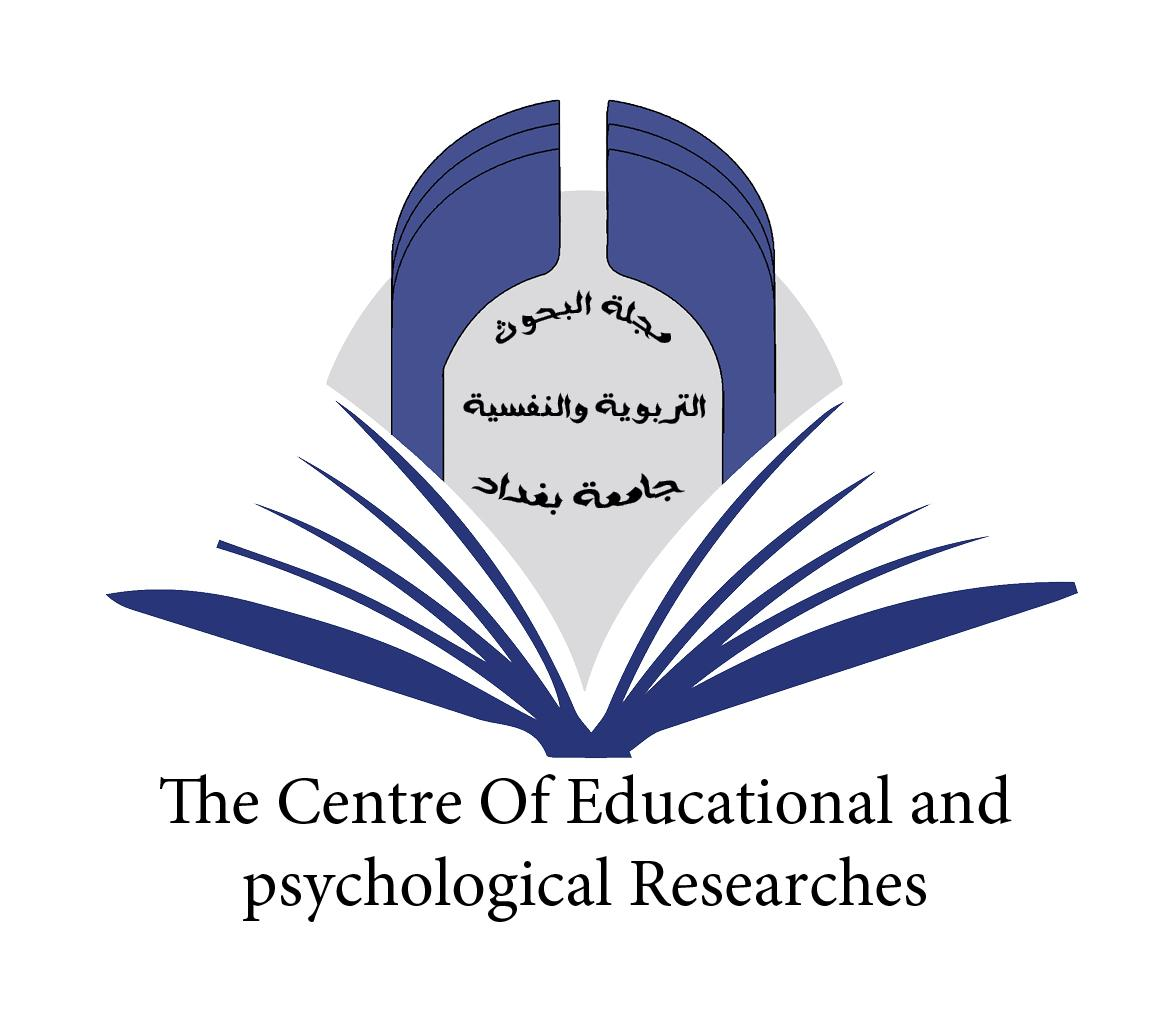Affiliation Motivation of University Teachers
DOI:
https://doi.org/10.52839/0111-000-085-017Keywords:
affiliation motivation, university teachersAbstract
The research aims to identify the affiliation motivation of university teachers in terms of gender, academic specialization, university sector (public, private), and the scientific rank of university teachers (professor, assistant professor, lecturer, assistant lecturer). To achieve this, a sample of 500 male and female teachers from the University of Baghdad, Al-Farahidi University College, and Sadr Al-Iraq University College were chosen for the academic year (2023-2024). To collect the needed data, a scale of 20 items designed by (Hill, 1987) to measure affiliation motivation was adopted. The results showed that university teachers have affiliation motivation. There are no statistically significant differences in the affiliation motivation among university teachers in terms of gender and specialization (scientific, humanities). There are statistically significant differences in affiliation motivation among university teachers according to the sector of university (private and public), in favor of public universities. Finally, there are statistically significant differences in affiliation motivation among university teachers according to the scientific rank, in favor of the assistant lecturer and lecturer. In light of the results, the researchers developed a set of conclusions, recommendations, and suggestions.
Downloads
References
المراجع العربية
1.أبو جادو ، صالح محمد مهدي (2013 ) : علم النفس ، عمان ، الأردن .
2.البرق ، عباس والمعلا ، عايد وسليمان ، امل (2013) : التحليل الإحصائي باستخدام برنامج اموس . ط1، اثراء للنشر والتوزيع ، الأردن .
3.تغيزة، أمحمد بوزيان (2012) : التحليل العاملي الاستكشافي والتوكيدي . ط1، دار المسيرة للنشر والتوزيع والطباعة ، عمان .
4.الدليمي ، نصيف جاسم (2013 ) : أصول وعناصر البحث العلمي ، مكتبة جزيرة الورد ، القاهرة .
5.الصفطي ، مصطفى زايد (1997) تحقيق الذات ودافعية التواد لدى طلاب الجامعة بالبيئات الحضرية وشبه الحضرية ، مجلة كلية التربية ، جامعة أسيوط ، العدد 13 ، الجزء 2، 24-278 .
6.عبيدات ، ذوقان وعبد الحق ، كايد وعدس ، عبد الرحمن (1984 ): البحث العلمي مفهومه وادواته واساليبه ، ط1 ، دار الفكر للطباعة والنشر ، عمان ، الأردن .
7.العجيلي، صباح حسين وآخرين، 1990، التقويم والقياس، وزارة التعليّم العالي والبحث العلمي، جامعة بغداد.
8.علام ، صالح الدين محمود (1993 ) : تحليل البيانات في البحوث النفسية والتربوية والاجتماعية، دار الفكر العربي للطبع والنشر ، القاهرة .
9.عودة ، احمد سليمان وملكأوي ، فتحي حسين (1993 ) : أساسيات البحث العلمي في التربية والعلوم الإنسانية ، اربد ، مطبعة جامعة اليرموك ، الأردن .
10.فريدمان ، هاورد س، وشستك ، مريام (2013) : سيكولوجية التنشئة الاجتماعية، ط1 ، دار الفكر الجامعي ، القاهرة ، مصر .
11.قندلجي ، عامر (2019 ) : منهجية البحث العلمي ، دار اليازوري العلمية للنشر والتوزيع ، عمان .
12.ليري ،ر. وهويل ريك . هـ (2018) المرجع في الفروق الفردية في السلوك الاجتماعي . ترجمة عبد اللطيف محمد خليفة وعبد المنعم شحاته وشاكر عبد الحميد ، المركز القومي للترجمة ، القاهرة ، مصر ، ط1 .
13.مرزوك،احمد محمد (2021 ) :الرفاهية الذاتية وعلاقتها بدافعية التواد ويقظة الضمير لدى مدرسي المرحلة الإعدادية،(أطروحة دكتوراه غير منشورة ) ,كلية التربية ، الجامعة المستنصرية، بغداد .
14.المرياني , حوراء هاشم نعمة (2023 ) : دافعية التواد وعلاقتها بالذكاء الروحي لدى طلبة الجامعة ، ( رسالة ماجستير غير منشورة ) ، كلية التربية ، جامعة واسط .
15.ملحم ، سامي (2000) : القياس والتقويم في التربية وعلم النفس ، ط 1 ، دار الميسرة للنشر والتوزيع ، عمان ، الأردن .
16.النمر ، عصام (2018 ) : القياس والتقويم في التربية الخاصة ، دار اليازوي العلمية للنشر والتوزيع ، عمان .
17.يونس ، ايمان ، وجاسم ، سعدي (2020) : التفكير الناقد لدى طفل الروضة ، مركز الكتاب الأكاديمي .
المراجع الأجنبية
1.Anastasi, A. (1976). Psychological Testing. Fourth, Edition, Macmilan.Company. Inc. New York.
2.Atkinson, J. W., & Walker, E. L. (1956). The affiliation motive and perceptual sensitivity to faces. The Journal of Abnormal and Social Psychology, 53(1), (38-41)
3.Atkinson, J. W., Heyns, R. W., & Ver off, J. (1954). The effect of experimental arousal of the affiliation motive on thematic apperception. Journal of Abnormal and Social Psychology, 49, (277-288).
4.Baumeister, R.F, &Leary, M.R. (1995), the need to belong: pesive for interpersonal attachment as a fundamental human.
5.Buss, A. H. (1983). Social rewards and personality. Journal of Personality and Social Psychology, 44, (553-563).
6.Cleophas, T.J.& Zwinderman, A.H., (2017): Understanding clinical data – analysis learning statistical principle from published clinical research. Springer International Publishing, Switzerland.
7.Darley, J. M., & Aronson, E. (1966). Self-evaluation vs. direct anxiety reduction as determinants of the fear-affiliation relationship. Journal of Experimental Social Psychology (Suppl. 1), (66-79).
8.Decker, W. H., Calo, T. J., & Weer, C. H. (2012). Affiliation motivation and interest in entrepreneurial careers. Journal of Managerial Psychology, 27(3), (302-320).
9.Freeman F.S.(1972).theory and practice of psychological testing. new york. Holt Rinehart &Winston.
10.Hill, C.A. (2009). Affiltion Motivation. In M.R. Leary & R.H. Hoyle (Eds), Handbook of individual differences in social behavior (410-225).
11.Hill,et al ,(2006 ) : "Friendliness motive and senses of collegiality and hostility in schools", New York: Academic Press, 40 (3).
12.Hill.Craig A (1987): Affiliation Motivation, people who Need people, But in Different Ways, Journal of personality and social penology vol ,52, no.5. (1008-1018).
13.McAdams, D.p.&Powers, J. (1981): Themes of intimacy in behavior and thought, Journal of personality and Social Psychology, 40 (3), (573-587).
14.McCollum, R & Austin, J. (2000). Applications of structural equation modeling in psychological research. Annual Review of Psychology, 51, 201-226.
15.Shawn C.O’ Connor and Lorne K .Rosenblood (1996) : Affiliation Motivation in Everyday Experience : A Theortical Comparison, University of Victoria, Journal of Personality and Social Psychology,vol 70 (3) ,513-522.
16.Taylor, S. E. (2006): Tend and Befriend Bio behavioral Bases of Affiliation Under Stress, Current Directions in Psychological
17.Wirth, M.M, &Schultheiss, O.C. (2006): Effects of affiliation arousal (hope of closeness) and affiliation stress (fear of rejection) on progesterone and cortisol, Hormones and behavior, 50 (5), (786-795).


